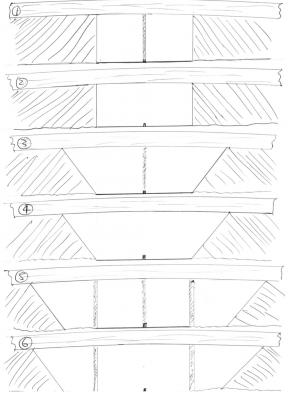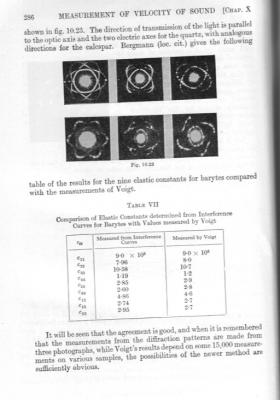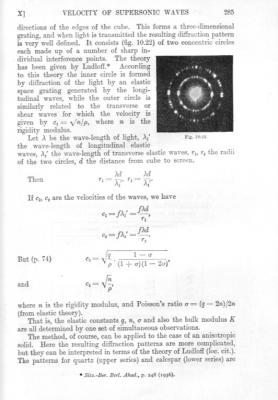-
Posts
17639 -
Joined
-
Last visited
-
Days Won
93
Content Type
Profiles
Forums
Events
Everything posted by studiot
-
Is this art or science Here are 6 possible arrangements of a motorway overline bridge crossing twin carriageways. Which do you prefer to approach? Which do you find most aestetically pleasing? My apologies for the squashed nature of the sketches. It is interesting to note that Arrangements 1 to 6 are arranged in increasing order of cost. They are also arranged in decreasing order of accident rate.
-

how does the concept of y going to infinity simplify the equation??
studiot replied to physica's topic in Homework Help
So you have the heat equation in a chimney. x is bounded but y is unbounded, but the question helpfully points out that u is bounded everywhere (=remains finite). When you separate the variables, the fact that u is bounded rules out many possible candidate functions for X(x) and Y(y) since X(x) must be bounded in the rannge 0<x<1 and Y(y) must be bounded in the range 0<y<infinity so for instance ex is admissible but ey is not since this tends to infinity (is unbounded) as y tends to infinity. -
I don't think Aristotle will ever live that horse down.
-
Hello Unity+, It is not clear whether this is a science or legal question, but seems to be more legalistic. In science(particularly mathematics) we have (dis)proof by counter example. It only takes one counterexample. In UK law we distinguish between Civil matters and Criminal matters. The big difference is the amount of proof required, called the 'burden of proof'. For Civil matters the burden of proof is substantailly lower. The common phraseology is In Civil matters the burden of proof is decided upon "The balance of probabilities" (in the evidence presented) In Criminal matters the burden of proof has to be "beyond reasonable doubt", which is much more onerous. However the burden of scientific proof is substantially higher than either of these.
-
This is an easy experiment to try for yourself. Don't be a Greek and guess. See if you can then explain the results.
-
Thank you both for your good thoughts. I must get MikeSmithCosmos to draw me some pictures of elbow grease.
-
Thanks, Worth a try it before I go to bed, but dishwasher stuff is similar to persil ie washing soda plus polyphosphates so I'm not sure. I know printers used to use large quantities of benzene to clean things up, but I don't have any.
-
Well 1000mg is 500 times as much as 2mg So you will need 500 times as much volume as for 2mg ie 500 x 100 microlitres.
-
I have a pair of miniature National Trust wellington boots at a pen holder that has become encrusted inside with old ink and other detritus from the pens. I am looking for suggestions as to how to clean this out. So far I have tried white spirit petroleum spirit caustic soda, drain cleaner hot persil solution without success Cleaning suggestions welcome. The wellingtons are made of thick pvc or polyethylene.
-
Genecks, thank you for taking the interest in some of my posts in this long thread. They were all intended to promote discussion, not stifle it. As regards your comments: Good point. I am at a loss on this one since your reply was not about the last three lines I wrote. These you also quoted elsewhere. So there may have been some mix up somewhere. I will deal first with the material you appear to have replied to, namely the clockwork universe. I do not agree that this is the same as the block universe, particularly as described by Einstein. The essence of the clockwork universe is cause and effect and predictability (= determinism). That is a given cause will always give rise to a specific, calculable and predictable effect. So given enough information a superbeing could, in principle, predict the future course of the entire universe. This view requires that time flows from past to future. Einstein's view of the block unverse was that time does not flow from past to future in his words "it just is". That is the essence of the block universe. But this is a digression from statistics. Back to my last three lines. these were about the same subject expanded on in my post103. Namely the difference between analysis and synthesis. In particular they were about the use of statistics in the synthesis process. Finally the OP philosophy. So far as I can see this may be summed up as. The OP rejects statistics and seeks a deterministic world. That part is fair enough and makes for a good discussion. However the OP goes further and accuses the professionals of a world wide conspiracy to suppress objections to statistics. IHMO This part is both seriously misguided and insulting to professionals who spend their daily toil dealing with the fact that they know all too well they do not have (and never can have) all the information. This situation is most evident in the synthesis process.
-
Yes it is the condition for this
-
It is interesting how this relates to the safety factors I was talking about.
-
+1 to Bignose for have far more patience than I do and for putting many of my thoughts more politely than I could. There is one further point, howevr, that I mentioned in post36, that has not received sufficient attention. All the discussion about statistics so far in this thread has been about analysis. It is far, far easier to find formula to analyse something that is already there (or given). A rocket of mass, m ; a cylinder of gas of volume, V and so on. than it is to put something specific in place. This process is called synthesis and statistics has greatly helped improve Man's ingenuity in the real world to synthesise. For instance if you have a valley, there is no formula that says bridge = XXXX or roadway embankment = that The design of such a bridge or embankment is part of the process of sythesis and statistics plays a vital part in the modern world of design. Again when someone goes to construct this embankment, there is nothing there to start with. Just uneven, sloping ground. He knows where the top of the embankment is to end up But he has to start at the bottom and build up. So what does he say to the first lorry driver who says here is your first load of fill material, where shall I dump it? In other words where is the edge of the base of the embankment? Incidentally statistics will not help answer this question, any more than deterministic geometry or mechanics. In school most questions are about analysis and usually deterministic. It can be a great shock on entering the real world where most activity is about synthesis and neither deterministic or even capable of being expressed by formula.
-
To quote M Escher Note : both artist and purely objective rules are mentioned. So was Escher artist or scientist or a mixture of both or neither?
-
Why not pick a particular chemical reaction and work on that to start with, before trying for a more all embracing theory? My Questions have been designed to elucidate information for anybody to try to help. I wish to avoid an argument about what actually participates in chemical reactions so I said "in general". I am sure there are always the famous exceptions. This is because of the stated objective of the thread. I still maintain that the principal players are the electrons. - in general. I am still not sure what exactly you are trying to calculate and from what starting point? By this I mean what are your proposed input variables and output variables? An electron has potential energy due to the potential field it finds itself in. This field is generated by the presence of the nucleus or nuclei. If there is to be a an unforced reconfiguration (which is what a chemical reaction is) then it will be energetically feasible if the end configuration has lower PE than the initial one. So it seems sensible to proceed by studying the calculation of these energies. For this a good starting point might be the book by Atkins and Friedman Molecular Quantum Mechanics
-
Does an observer in the same intertial frame as the mass and spring observe the mass as increasing? In particular does the spring 'observe' an increase in suspended mass?
-
Look here for brachistochrone. http://www.google.co.uk/search?hl=en-GB&source=hp&q=brachistochrone&gbv=2&oq=brachistochrone&gs_l=heirloom-hp.1.0.0l10.1297.4797.0.10735.15.10.0.5.5.0.172.1469.0j10.10.0....0...1ac.1.34.heirloom-hp..0.15.1657._XFvibAUHQM
-
Yes I suppose you could say that.
-
In M De Sautoys book he tells of finding the full set embodied in the tiling in the Alhambra. A good thousand years before Escher - though that is not to detract from Escher's achievements. And, by the way, I gave my answer to your earlier question.
-

Is This a Valid Way to Divide by Zero?
studiot replied to Asterisk Propernoun's topic in Speculations
First part The idea that division by zero results in a blank (I prefer the word blank to your "nothing" since nothing can mean zero so blank is less confusing) is contrary to the closure requirement from set theory. That is every operation of the type A/B must result in another member of the set Division by zero cannot achieve this.. When folks start to contemplate dividing by zero they usually quickly move off set theoretical ideas of what a number is and limit their discussion to the counting property of numbers. You have done the same here, and quickly shown that we do not need negative numbers for counting. -
-
What is this if not a continued personal attack against professionals?
-
Gosh didn't I mention that somewhere else recently? JC, I am only trying to help clarify alkis3's questions since he genuinely wants to achieve something.
-
You started this thread with a perfectly reasonable proposition for debating purposes. However you also added an extremely insulting allegation against professionals, which you have further promoted throughout the thread. The truly professional way to discuss something when there is a difference in point of view is to pool all the known facts and information and examine them dispassionately to try to jointly arrive at the truth. I have tried to offer this process, but without cooperation. I therefore reluctantly come to the conclusion that the true purpose of this thread is to foster an argument. Finally, your use of the word certain seems to me to mean what is commonly called 'deterministic' in Science rather than the real meaning of the word certain. I can count three tablets and establish that there are three. There is nothing deterministic about this. However 3 times 2 makes 6 is deterministic, but can also be called certain. The following link may help you with some scientific terms and also has some interesting things to say about the thread subject matter. http://abyss.uoregon.edu/~js/glossary/clockwork_universe.html
-
Chemical reactions do not, in general, involve nuclei. I assume you mean the nuclei of atoms. Nuclear reactions involve atomic nuclei. Are you referring to the chemical terms electrophilic reactions and nucleophilic reactions?





